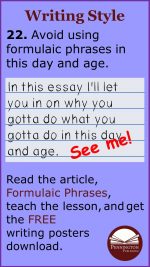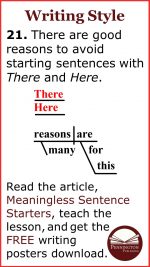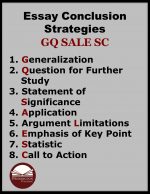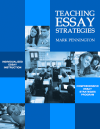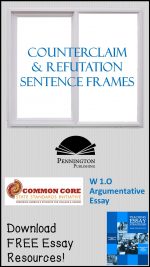
Common Core State Standards
Standards-based education is now the norm in public and most parochial schools. Having largely captured the focus of the educational reform movement over the last 25 years, standards-based instruction is now the instructional mandate in all 50 states. Although some states have rescinded their adoption of the Common Core State Standards and some, like Texas, never did adopt the Standards, each state has adopted its own set of standards and some have developed their own state assessment systems. Teachers and district administrators continue to align curriculum to the instructional demands of the Common Core English Language Arts Standards.
Although the authors of the Common Core State Standards assert that literacy instruction must be a shared responsibility within the school, the largest burden still falls on the shoulders of ELA teachers. Of the four Reading, Writing, Speaking and Listening, and Language Strands, the Language Strand presents the greatest challenge for many teachers. Most ELA teachers simply have not had the undergraduate or graduate coursework to prepare them to teach the L.1, 2, 3, 4, 5, and 6 Standards in grammar and usage, mechanics, spelling, language application, and vocabulary.
This author, Mark Pennington, has written articles and developed free teaching resources on the Common Core ELA Standards and included these in his Pennington Publishing Blog to support fellow ELA teachers and reading intervention specialists. Mark’s assessment-based teaching resources are available at Pennington Publishing.
This article and resource compilation is jam-packed with FREE resources, lesson plans, and samples from grades 4–high school ELA and reading intervention programs, developed by teacher and author, Mark Pennington. Each of the following 25+ articles has multiple links to research, related articles, and free or paid resources:
Common Core Literalism
The Common Core State Standards were never written to be the Bible for ELA and reading intervention teachers. Read what the Common Core authors have to say and see how a common sense approach to teaching to the Standards can benefit both students and teachers.
FREE Instructional Resources: Syllable Awareness Assessment, 20 Advanced Syllable Rules, 10 English Accent Rules
Response to Intervention and the Common Core
Many teachers have never read the entire Common Core English Language Arts Standards. Sure, they’ve read their own district or state summaries of the Standards, but not the documents themselves. To understand the instructional role of the Standards, teachers must read the appendices, which discuss important reflections and research regarding, for instance, reading intervention.
Grammar and the Common Core
More than any other Strand within the Common Core State Standards, the Language Strand with its focus on direct grammar, mechanics, and vocabulary instruction has been whole-heartedly embraced or intentionally ignored by teachers.
Common Core Instructional Minutes
With all the CCSS mandates, how can an ELA teacher allocate instructional time to be faithful to the Standards, while maintaining some sense of one’s own priorities? This article gets down to the minute-by-minute.
Common Core Academic Language Words
Of course, history, science, and technology teachers need to teach domain-specific academic vocabulary. However, there is a difference between academic language and academic vocabulary. The latter is subject/content specific; the former is not. Reading more challenging expository novels, articles, documents, reports, etc. will certainly help students implicitly learn much academic language; however, academic language word lists coupled with meaningful instruction do have their place. So, which word lists make sense?
Common Core Greek and Latinates
The bulk of Vocabulary Standards are included in the Language Strand of the Common Core State Standards (CCSS). Greek and Latin affixes (prefixes and suffixes) and roots are key components of five of the grade level Standards: Grades 4−8. Which Greek and Latin affixes and roots should we teach? How many should we teach? How should we teach them?
Grammar, Mechanics, Spelling, and Vocabulary
Grammar, Mechanics, Spelling, and Vocabulary is part of a comprehensive Grades 4−12 language program, designed to address each Standard in the Language Strand of the Common Core State Standards in 60−90 weekly instructional minutes. This full-year curriculum provides interactive grammar, usage, mechanics, and spelling lessons, a complete spelling patterns program, language application openers, and vocabulary instruction. The program has all the resources to meet the needs of diverse learners. Diagnostic assessments provide the data to enable teachers to individualize instruction with targeted worksheets, each with a formative assessment. Progress monitoring matrices allow teachers to track student progress. Each instructional resource is carefully designed to minimize teacher preparation, correction, and paperwork. Appendices have extensive instructional resources, including the Pennington Manual of Style and downloadable essay-comments. A student workbook accompanies this program.
Overview of the Common Core Language Strand
English-language arts teachers have long been accustomed to the four-fold division of our “content” area into Reading, Writing, Listening, and Speaking. These divisions have been widely accepted and promoted by the NCTE, publishers, and other organizations. In a nod to the fearsome foursome, the Common Core State Standards in English Language Arts maintains these divisions (called strands) with two notable revisions: Speaking and Listening are combined and Language has its own seat at the table.
Common Core Grammar Standards
The Common Core State Standards in English Language Arts are divided into Reading, Writing, Speaking and Listening, and Language strands. The Common Core Grammar Standards are detailed in the Language Strand. It is notable that grammar and mechanics have their own strand, unlike the organization of many of the old state standards, which placed grammar and mechanics instruction solely within the confines of writing or speaking standards.
Of course, the writers of the Common Core use the ambiguous label, Language, to refer to what teachers and parents casually label as grammar and mechanics or conventions. To analyze content and educational philosophy of the Common Core State Standards Language Strand, it may be helpful to examine What’s Good about the Common Core State Standards Language Strand? as well as What’s Bad about the Common Core State Standards Language Strand? chiefly from the words of the document itself.
How to Teach the Common Core Vocabulary Standards
What most teachers notice after careful reading of the Common Core Vocabulary Standards is the expected breadth, complexity, and depth of instruction across the grade levels. These vocabulary words require direct, deep-level instruction and practice in a variety of contexts to transfer to our students’ long-term memories. So what instructional strategies make sense to teach the Common Core Vocabulary Standards? And what is the right amount of direct, deep-level vocabulary instruction that will faithfully teach the Common Core Vocabulary Standards without consuming inordinate amounts of class time? Following is a weekly instructional plan to teach the L.4, 5, and 6 Vocabulary Standards.
CCSS Language Progressive Skills
The Language Strand has been one of the most controversial components of the COMMON CORE STATE STANDARDS FOR ENGLISH LANGUAGE ARTS & LITERACY IN HISTORY/SOCIAL STUDIES, SCIENCE, AND TECHNICAL SUBJECTS. The Language Progressive Skills document emphasizes the essential grammar, usage, and mechanics skills, which need to be reviewed and reinforced year after year..
Common Core Curricular Crossover
The Common Core State Standards (CCSS) produces some interesting curricular crossover. The traditional English-language arts divisions of reading, writing, listening, and speaking have been replaced with four new strands: reading, writing, speaking and listening, and language. The six Standards of the Language Strand borrow a bit from each of the traditional divisions. The inclusion of the Language Strand as its own set of Standards has created some concern in the ELA community.
Spelling Word Lists by Grade Levels
As an MA Reading Specialist and author of quite a few spelling curricula (eight at last count), I’m often asked about spelling word lists by grade levels. Which words are right for which grade levels? Is blank (substitute any word) a third or fourth grade word? Which spelling words are the most important ones to practice? The short answer is…
Common Core Essay Writing Terms
I propose using the CCSS language of instruction for the key writing terms across all subject disciplines in elementary, middle school, and high school. Some of us will have to come down out of our castles and give up pet writing terms that we’ve used for years, and ones that, indeed, may be more accurate than those of the CCSS. But for the sake of collaboration and service to our students, this pedagogical sacrifice is a must.
Common Core Content Area Reading and Writing
Nothing in the new Common Core State Standards (CCSS) has worried English-language arts teachers more than “The Great Shift.” This shift changes the emphasis of reading and writing in K-12 English-language arts (ELA) classrooms from the literature and narrative to the informational (to explain) and argumentative (to persuade) genres.
Common Core Language Standards
Teachers are generally quite familiar with the CCSS Reading and Writing Standards, not so with the Language Strand Standards. The Language Strand includes the grammar, usage, mechanics, and vocabulary Standards.
Standards and Accountability
Sometimes we teachers can be our own worst enemies. Check out this article, published in the Answer Sheet of The Washington Post.
Turning Dependent into Independent Readers
The Common Core State Standards for English-language Arts makes a compelling case for not doing business as usual in our ELA classrooms. That business consists of the traditional “sage on the stage” methodology of reading an entire novel or play out loud and parsing paragraphs one at a time. Our new business? Scaffolding just enough reading strategies and content as we act as “guides on the side” to facilitate independent reading. In other words, the days of spoon-feeding have got to go.
Why and How to Teach Complex Text
A growing body of research presents a challenge to current K-12 reading/English-language Arts instruction. In essence, we need to “up” the level of text complexity and provide greater opportunities for independent reading. The Common Core State English-language Arts Standards provides a convincing three-reason argument in support of these changes in instructional practice. Following this rationale, I will share ten instructional implications and address a few possible objections.
Common Core State Writing Standards
The Common Core State Writing Standards have used a rather utilitarian approach to categorize essays into two classifications: argument and informational/explanatory writing. The approach used by the English-language Arts committee was to examine the writing assignments of freshman English college professors then define the essay accordingly for the purposes of the Common Core State Writing Standards.
How to Teach the English-language Arts Standards
Every English-language arts teacher shares the same problem—too much to teach and not enough time to teach it. So, where are the magic beans that will allow us to teach all of the have-to’s (think ELA Standards) and still have a bit of time to teach the want-tos? Following are a few suggestions to help the clever ELA teacher have her cake and eat it, too.
Should We Teach Standards or Children?
The excesses of the standards-based movement frequently run contrary to the need to differentiate instruction, according to the diagnostic needs of children.
 More Articles, Free Resources, and Teaching Tips from the Pennington Publishing Blog
More Articles, Free Resources, and Teaching Tips from the Pennington Publishing Blog
Bookmark and check back often for new articles and free ELA/reading resources from Pennington Publishing.
………………………………………………………………………………………………………………………………………………………………………………………………………………………………………………………………………………………
Pennington Publishing’s mission is to provide the finest in assessment-based ELA and reading intervention resources for grades 4‒high school teachers. Mark Pennington is the author of two Standards-aligned programs: TEACHING ESSAYS BUNDLE and Grammar, Mechanics, Spelling, and Vocabulary . Mark’s comprehensive Teaching Reading Strategies and the accompanying Sam and Friends Guided Reading Phonics Books help struggling readers significantly improve their reading skills in a full-year or half-year intensive reading intervention program. Make sure to check out Pennington Publishing’s free ELA and reading assessments to help you pinpoint grammar, usage, mechanics, spelling, and reading deficits.
Grammar/Mechanics, Literacy Centers, Reading, Spelling/Vocabulary, Study Skills, Writing
Assessment-based Individualized Instruction, close reading, Common Core English, Common Core English language arts Standards, common core language strand, Common Core Standards, critical thinking, Developmental Characteristics, differentiated instruction, Educational Issues and Teaching Trends, EL Resources, ELD Resources, English-language Arts Instruction, English-language Arts standards, ESL Resources, essay strategies, grammar and mechanics, grammar standards, independent reading, literacy centers, literacy stations, oral language, professional development, reading assessments, reading intervention, reading standards, spelling, structural analysis, study skills, syllabication, Teaching Reading in the ELA Classroom, test preparation, the writing process, vocabulary, vocabulary standards, writers workshop, writing standards, writing style

![]()


